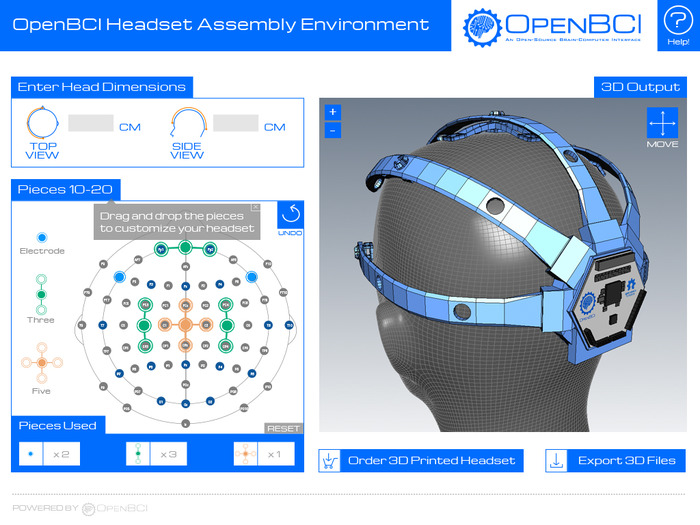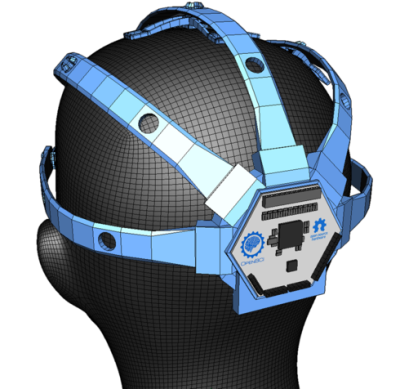
OpenBCI: An Open Source Brain-Computer Interface For Makers
We just came across a Kickstarter project from OpenBCI, and it is not as intimidating or as complex as the name suggests. Open Source Brain-Computer Interfaces (BCI), quite the mouthful.
Essentially, a brain-computer interface (BCI) is a connection between the human brain and an external device. Although this sounds wildly futuristic, research in the BCI field has been ongoing, more or less, since the early 1970s.1 The early research focused mainly on measuring brain activity, as opposed to putting said activity to use. Presently, however, there are a number of greatly successful BCI devices, and there is an even greater amount of potential for advances in the field.
People who were once blind, can now see2; paralyzed people are able to control robotic limbs with their brains3; patients are able to recover mobility in paralyzed limbs4; The University of Nebraska is developing a BCI that could detect a concussion in as little as 10 minutes5; the potential use-cases for BCIs are nearly limitless.
While the potential is limitless, there are more traditional barriers in the way of innovation. All of the advancements listed in the above paragraph are proprietary and protected by copyrights and patents. This is not an argument against patents or copyrights by any means, rather an illustration of the current state of the field. In many fields of science and education, open-source movements have developed, rapidly accelerating the development through collaboration. In a nutshell, OpenBCI’s mission is to bring the benefits of open-source to the study and use of BCI devices.

As the field stands today, the entry barriers for BCI work/research are overwhelming, particularly the cost of the equipment. Now, with the success of the OpenBCI Kickstarter project, these barriers will begin to fall.6 Although the price is sure to rise a bit, the OpenBCI Kickstater project offered a BCI starter kit as a reward for pledges of $324. Rather than offering a broken description of the device and how it works, we will defer to the Kickstarter video for the project below:
Though the realization of a huge open-source BCI community is, perhaps, some years off, the overwhelming success of the OpenBCI Kickstarter project has proven that there is a need for such a community. It will be very exciting to watch the BCI field evolve once the Kickstarter rewards begin shipping. The day that we will be able to turn on a light simply by thinking about it, while still far away, is within reach.
Check out the OpenBCI website and their Kickstarter Project for more info.
- The first instance of the term brain-computer interface appears in, J J Vidal, “Toward Direct Brain-Computer Communication,” Annual Review of Biophysics and Bioengineering Vol. 2, (June 1973) Pp. 157-180. ▲
- Steven Kotler, “Vision Quest: A half century of artificial-sight research has succeeded. And now this blind man can see,” Wired, Issue 10.09 | Sep 2002 ▲
- Daniel Bacher, Beata Jarosiewicz, Nicolas Y. Masse, John D. Simeral & Joern Vogel, “Reach and grasp by people with tetraplegia using a neurally controlled robotic arm,” Nature, Vol. 485, Issue 7398, (17 May 2012) Pp. 372–375. ▲
- Teo, “Brain-computer interface reconnects disabled patient’s brain to his muscles (video),” Neurogadget.com, 28 January 2013 ▲
- Bryan Toporek, “University of Nebraska Creating 10-Minute Concussion-Detection Tool,” Education Week, 15 July 2013 ▲
- The Kickstater project raised a total of $215,438 from 947 backers ▲

